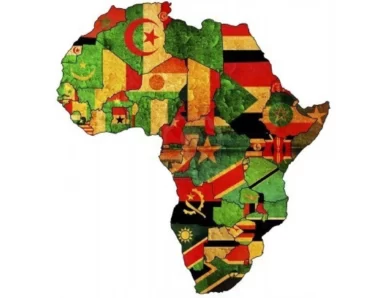
The commercialization of surfing in Huntington Beach : How ‘Surf City USA’ brands downtown at the expense of the Aloha spirit
Three hundred years ago, surfing legitimated political power in Hawaii. The best surfers rode long boards and were erected to the highest social position. Today in Huntington Beach, California, wave riding does not ensure royal authority but stimulate capitalism and city branding through commercialization of its subculture. This article points out the lifestyle and professional sport of surfing as political and territorial resource nourishing economic growth. In opposition, it provides alternatives to the popularization of the “Aloha spirit.”

The growth of a subculture
At the beginning of the twentieth century, investors like M. Henry Huntington tried to develop California coastline. In their attempt to attract people to new seaside cities, like Santa Monica and Huntington Beach, they hired Georges Freeth, a famous Hawaiian surfer from Waikiki to give surf demonstrations. Showing a man walking on the sea, businessmen explained the goodness of the Ocean to sell real-estate properties. However, families feared to live nearby the shoreline because of common ignorance of the sea.
In fact dwellers preferred to settle in suburbs, far from downtown, the noisy and busy economic center. As a result California did not thrive on coastal development but on inland ‘suburbanization’. In the 1930s and 1940s, the state built many freeways to connect city centers and suburbs, basing the economic growth on oil and car industries. From 1955 to 1965 California became the wealthiest in the Union and knew its “Golden Age” through rapid demographic development.
Given that families settled into daily routine, traffic jam and crowded urban life, near beaches emerged as attractive destinations for weekends and vacations like Malibu, Huntington Beach and Newport Beach. Resonant in popular culture, by the 1950s, oceanfront and surfing became part of the American dream and the California way of life.
Indeed, surfers featured the opposite pattern of domesticity and everyday work life. Their body reflected the healthiness of open spaces and freedom: tanned skin, wide shoulders, strong back and chest suggested an athletic body as well as reaffirming masculinity. The male white middle-class teenagers, called “golden youth” glorified and reproduced the surfer way of life. The sport participation in California grew from 10,000 in 1958 to 150,000 in 1964 and led to the emergence of a lifestyle.
How to make money out of surfing?
As a forthcoming subculture, like the Beat Generation, surfing competed with capitalism in promoting freedom, pleasure, disdain from work and connection with nature. Afraid of this subversive power, the Hollywood studios, under the aegis of the Republican Party, turn surfing into a domesticated fashion, called the “Pop surf culture” from Malibu beach.
Supplemented with pop music like Surfin’ Safari (1962), Surfer Girl (1963) and Surfin’ USA (1963) from the Beach Boys, the Hollywood studios, like the American International Pictures, featured “beach stories” applauding youthfulness, romance, recreation and consumption. The first movie was Gidget, released in 1959 by Columbia Pictures, followed by Beach Party (1963), Bikini Beach Party (1964), Muscle Beach Party (1964), Ride the Wild Surf (1964) and How to Stuff a Wild Bikini (1965).
Both music and films were ideological tools for spreading the Republican ideology to the masses. The surf culture was portrayed as the antithesis of the domesticated citizen who must rely on capitalist values: hard work, education, asceticism and patriotism.
By the end of the 1960s, the Los Angeles basin took advantage of the littoral by commercializing the beach while spreading American ethics. Ever since, the Pop surf culture has reshaped the sport from a deviant subculture into an international market. Leader in making ‘surfwear’, the Los Angeles and Orange Counties have become hubs of trunks design and manufacturing.
Distinction and social closure through Soul surfing
However, when the sport was popularized in fashion, music, movies and commodities, some wave riders called ‘soul surfers’ condemned the commercial growth of surfing toward the mainstream. Animated by the spirit of ancient Hawaiian customs and inspired by the Beat and the hippie cultures, they believe in experience, hedonism and art form.
Soul surfing have never been defined by tenets or principles but, by the 1970s, it became the catchall opposition philosophers to surf industry, media and professional competition. It contests the materialistic and political exploitation of surfing by mechanisms of social closure and distinction.
Even if soul surfers looked for peacefulness, the community of Huntington Beach had long-established reputations for violence and drug abuse. They applied ‘localism’ that consists in controlling the access to surfing ‘spots’ through exclusionary cultural practices. Since local surfers used to ride the same spot daily, they claimed exclusive rights over tourists and foreigners.
Downtown Huntington Beach were nicknamed ‘Surf ghetto’ and localism occurred both on land and water nearby the pier and surfers’ facilities, such as retail stores and the ‘Surf theatre’. Locals, such as those from Santa Monica, exposed in the documentary Dogtown and Z-Boys, were notorious for intimidating and disturbing outsiders. At time the area was outlaw and few tourists and families would visit the city.
The branding of Huntington Beach from the popular surfing image
In 1979-80, Mr. MacAllister, the mayor of the city decided to redesign downtown which suffered from lack of development plan. Inspired by the song ‘Surf City’ from the duo Jan and Dean duo, he brought the surf way of life to the market. The project consisted in reducing insecurity by building a new beach oriented downtown made of luxury hostels, restaurants and surfing retail stores.
From 1988 to 1993 an aggressive reorganization shaped the district into a surf showcase to impel the reputation of Huntington Beach as the world first Surf City. The International Surfing Museum was built in 1988 and celebrates the local contribution to the international history of the sport. Then, former little surfshops like Jack’s Surfboards and Huntington Surf and Sport, were demolished and rebuilt into huge clothing stores nearby the Surfing Hall of Fame, restaurants and the waterfront Hilton resort. In short, the commercialization of the sport renewed the decrepit downtown into a luxury waterfront complex.
Professional events and festivals erected the sport to political resource for sustainable territorial identity. For example, the US Open created in 1994 backed up the former Op Pro and made the city reputation shined. The media coverage of shortboard competitions in newspapers, magazines and television reached a wide public and broadcast a modern image of surfing. By then, the marketing potential of the sport allowed to sell standardized product like T-shirts, shoes or towels as genuine and fashionable surfer goods.
Eventually in 2004, the Huntington Beach Conference and Visitors Bureau submitted patent application to copyright for the exclusive use of “Surf City USA.” The brand was granted in 2006 and the city succeeded in managing its reputation toward the surfers and the mainstream. Nowadays the profit of branding Huntington Beach creates jobs, boost the local economy and bring money for both private companies and the public purse.
Alternatives to the cultural exploitation of surfing
During the 1990s, tourism attracted up to 180.000 visitors a day in downtown, making the tiny surfer community unsustainable. Nevertheless, the city branding corresponds to community and identity loss for old locals. Indeed, the popular image of surfing took the deviant behavior away from the genuine lifestyle. Resorts and beach oriented activities such as the US Open overrepresented competitiveness, consumerism and spectacle at the expense of social cohesion.
As a result, former locals took the opposite course of this shortboard fashion and created a longboard club in 1985, called the Huntington Beach Long Board Crew. Inspired by a 1960s American nostalgia trend, they made distinction in gathering into a not-for-profit organization. Defining themselves as soul surfers, they promote a respectful way of life in opposition to its stereotypical and popular image. They set social closure by limiting club membership to Huntington Beach residents and Crew’s friends.
To them a decent surfer must advocate community, solidarity, friendship and moral instead of profit making. In this respect the club performs fundraising for charity causes, such as the “Adopt-A-Family” program, that consists in providing canned food and bikes for children, in Baja California.
Promotion of environmental and social justices
This struggle against the profit-making ideology is also claimed by The Surfrider Foundation, a worldwide nonprofit environmental organization dedicated to the protection and preservation of oceans, waves and beaches. Created in 1984 in Malibu by California surfers, the foundation reached the international level from the 1990s setting chapters in France, Australia, Japan, Argentina and Brazil.
Their first program called “Respect the Beach” was designed to put children across ownership of the coastal and marine ecosystem through education program in school. The second was “Blue Water Task Force” program focusing on water-quality monitoring to warn citizens and officials about water-quality problems.
In many other locations, surfer organizations seek helping citizens. For instance, in South West of France, Surf Insertion created in 1997, give the opportunity to needy children, from rural districts, to surf and learn about environmentalism. Another example would refer two documentaries called Surfing Favelas and Rio Breaks presenting the Favela Surf Club as an organization to push the youth to get out of the slums of Rio de Janeiro.
In all, representations of the surf culture are flexible. Only a particular image of the culture is emphasized by private companies and city officials to serve their interests. Although surfing was portrayed as unworthy sport by media in the 1970s, it has turned into a profitable business by the 1990s. However commercialization of surf products and culture push soul surfers forward social justice, as well as environmentalism, to get community and distinctiveness back in a disenchanted world.
Jérémy LEMARIE
Pour aller plus loin :
GUIBERT Christophe, L’univers du surf et les stratégies politiques en Aquitaine, Paris, L’Harmattan, 2006. About the exploitation of surfing by some cities in South-West France.
Huntington Beach’s website, http://www.ci.huntington-beach.ca.us/
ORSI Agi, Dogtown and Z-boyz, 2001, 91min. Wikipedia description of Dogtown and Z-boys http://en.wikipedia.org/wiki/Dogtown_and_Z-Boys BACALINI Natalia, EZZAOUI Maximiliano, Surfing Favelas, 2006, 56 min. Few details about the documentary at http://www.imdb.com/title/tt0949774/plotsummary MITCHEL Justin, Rio Breaks, 2009, 85min. Watch the documentary online at http://www.cultureunplugged.com/documentary/watchonline/festival/play/3944/Rio-Breaks Surf Insertion’s website, http://www.surfinsertion.com/?page=accueil




No Comment